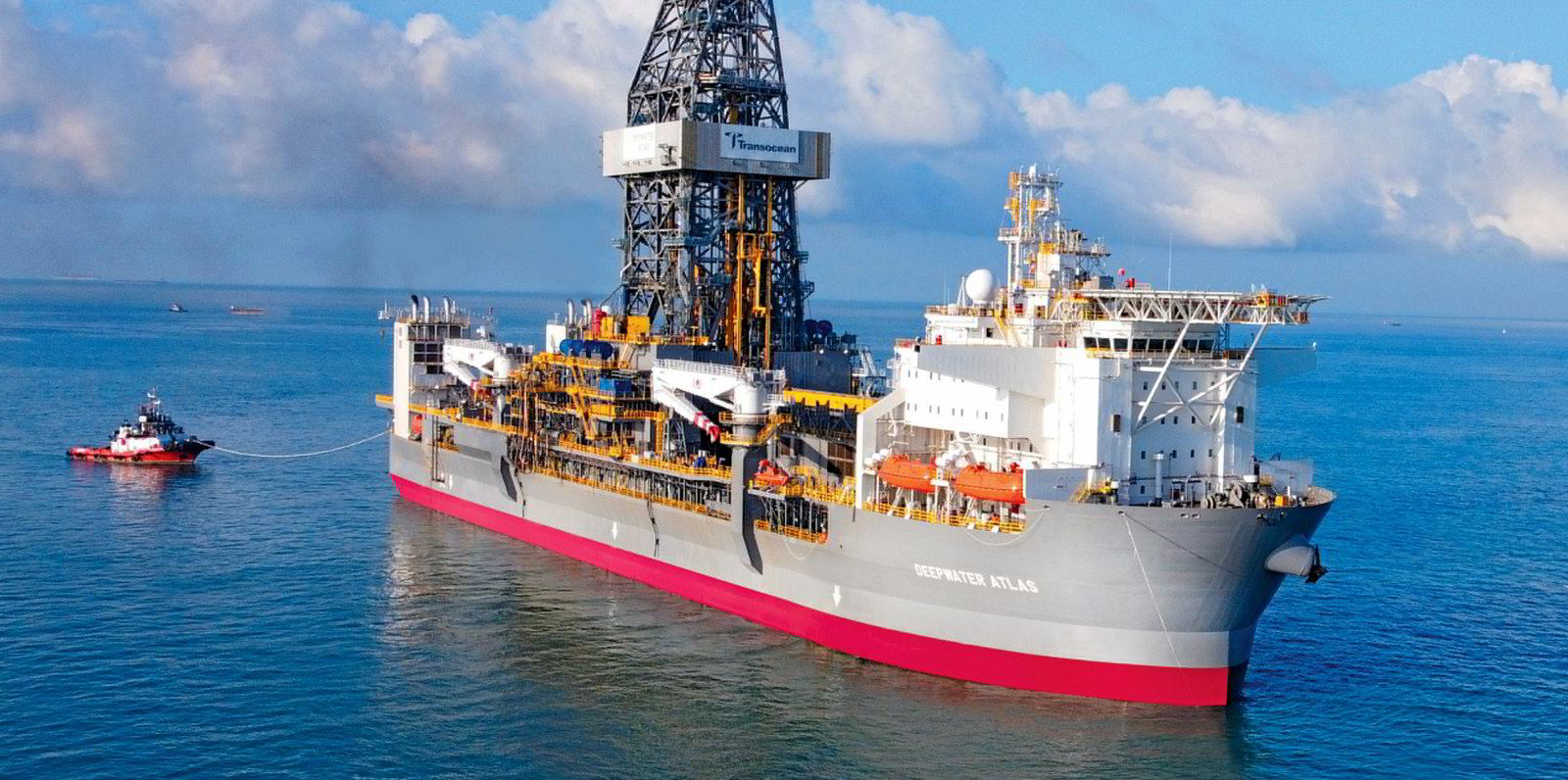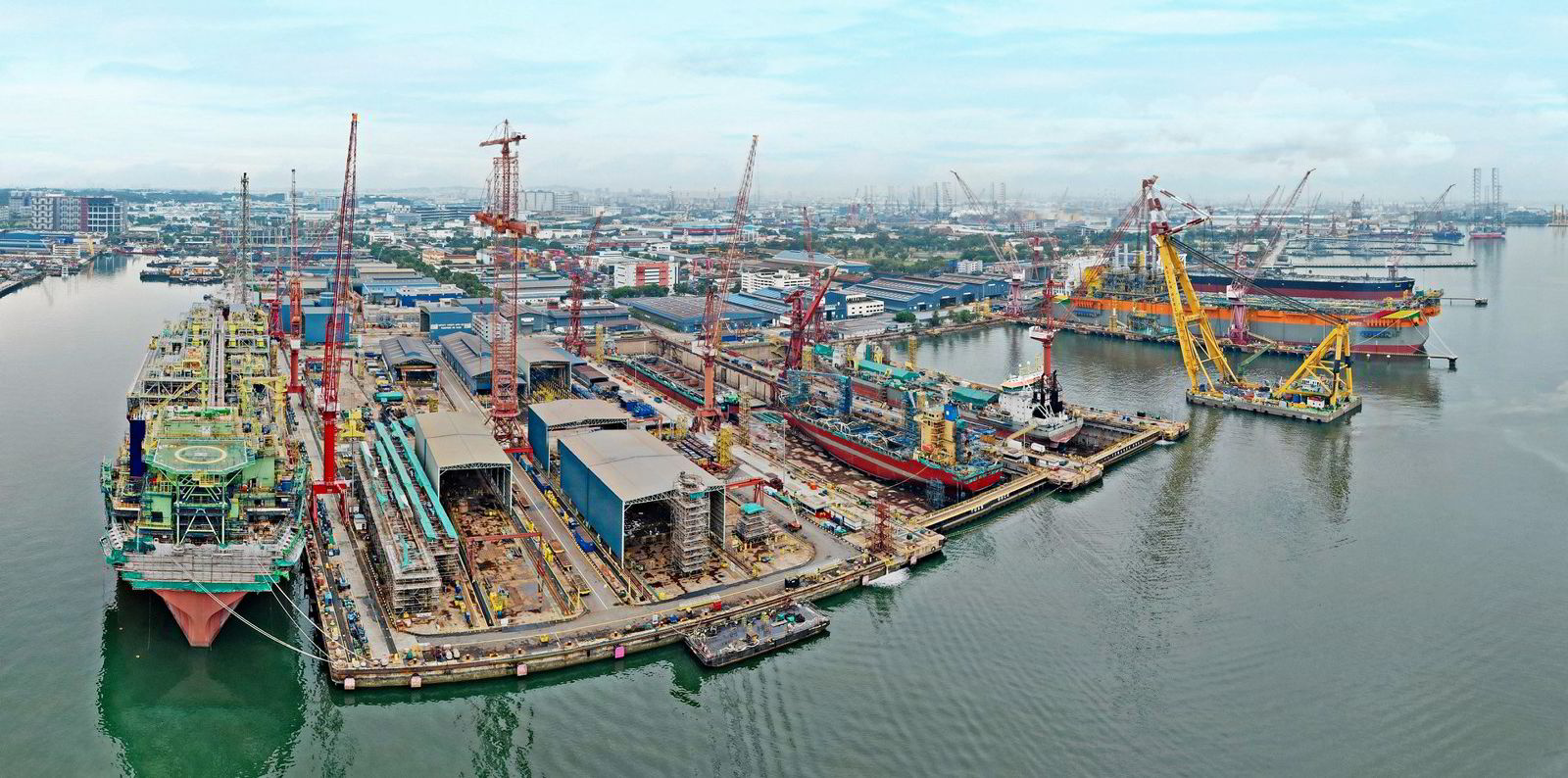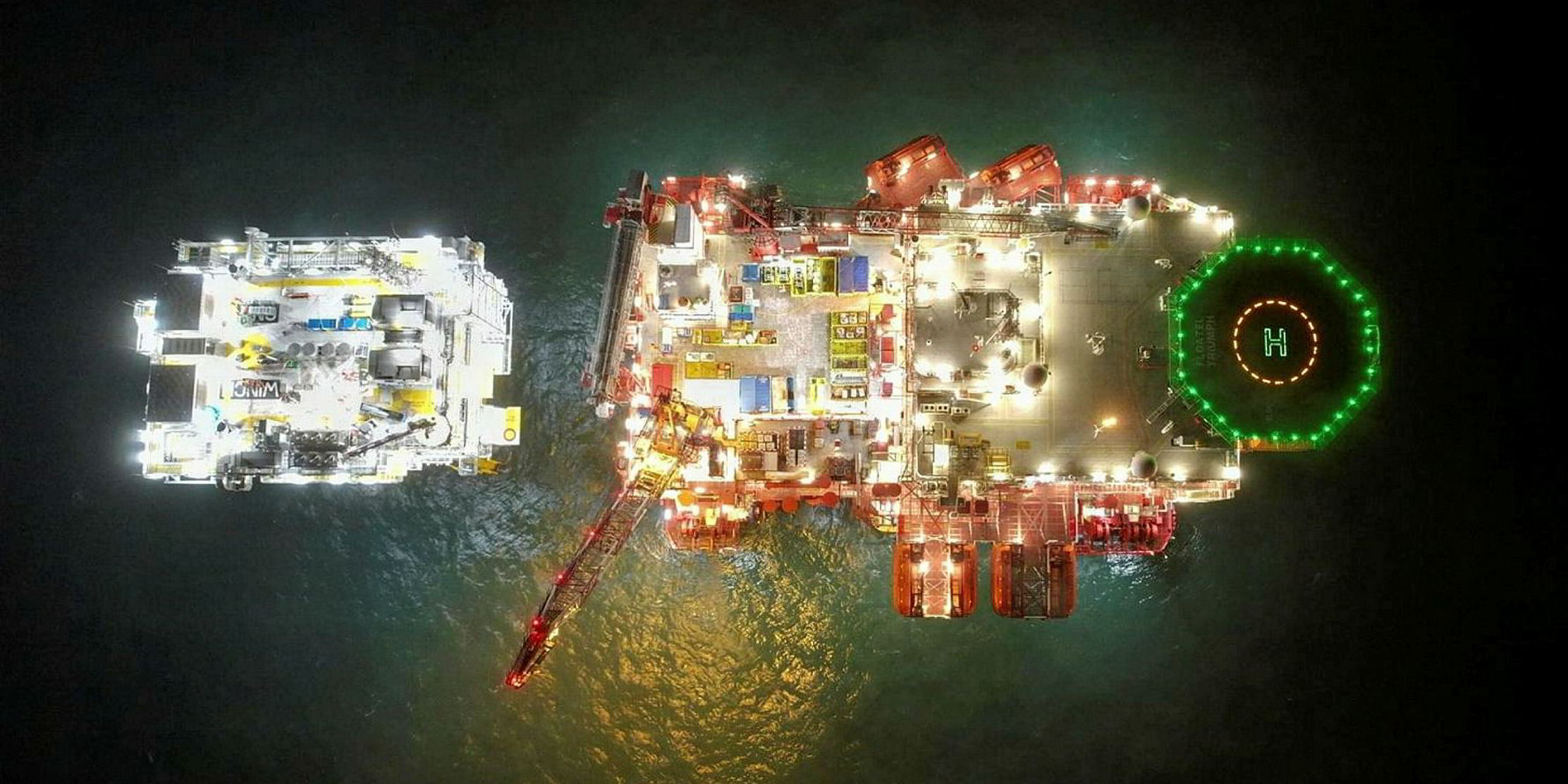Improving sentiment in the offshore market means the long-standing overhang of ‘stranded’ drilling assets are now finding employment, much to the relief of the shipyards that built them.
Even prior to the Russia-Ukraine conflict, which sent oil prices over $100 per barrel, the macro situation had become more supportive as oil prices rose above $70 per barrel by mid-2021, according to a recent report by Clarksons.
“Several offshore sectors now look very short of ‘hot’ supply notably drillships, where availability is down 75% from the start of 2021,” the shipbroker said.
Esgian senior rig analyst Sarah McLean told TradeWinds that there has been a significant reduction in the global fleet over the past two downturns.
Rising demand
“These were primarily older semi-submersibles and jack-ups, but we also saw a few relatively new drillships hit the scrapyards as there just was not the demand there for them,” she said.
“Now, with demand having been rising steadily over the course of the past year, then an acceleration since the Russian invasion of Ukraine, the remaining supply has tightened considerably. This means those previously stranded units are now finding work that just was not out there before.”
Esgian said there are currently 33 jack-ups and six semi-submersibles classed as under construction, while there are 15 drillships still at the yards that built them.
According to Esgian Rig Analytics, global jack-up marketed utilisation is expected to hit 85% in early 2023 before peaking at 89% later that summer. However, there is some room for this to rise further as operator plans are firmed up and previously on-hold projects get the green light. Already some regions are forecasting close to 100% in 2023.
“The Middle East, in particular, is having an enormous impact on jack-up demand with rigs being pulled in from other regions, units being reactivated, and indeed some newbuilds from yards,” McLean said.
Singapore’s Keppel Corp has recently managed to offload four of their stranded assets to contractors who will put them to work in Saudi Arabia, while Oslo and US-listed Borr Drilling’s recent sale of three units is also understood to be for a Middle Eastern contractor.
“With demand continuing to rise in the region, and as older assets find the end of their useful lives over the coming years, we could expect to see more under-construction units find work as well as new orders potentially coming in, albeit nothing like the frenzies of construction we have seen in the past,” McLean said.
“There is also some chance we could see some jack-ups under construction in China being snapped up for conversion to be used in offshore wind installation.”
In the deepwater market, McLean said she has seen newbuild rigs being bid into work into the US Gulf of Mexico, South America and West Africa.
“These are the areas where we see the most significant increase in demand over the next few years with newer, higher-spec units often favoured,” she said.
Such a shortage prompted US drilling giant Transocean to recently take delivery of the Deepwater Atlas from Singapore’s Sembcorp Marine.
The rig, which has been touted as “the world’s first eighth-generation drillship” was in fact one of two units ordered back in 2014 for $540m each at Jurong Shipyard.
Demand destruction
Of course, expectations of further rate improvements are not without downside risks, according to Clarksons.
“Though high oil prices have benefited operators, the Ukraine conflict has created volatility and uncertainty,” the broker said.
“Inflationary trends also risk oil and gas demand ‘destruction’, whilst increasing debt servicing costs for owners and operators. Still, for now, the stage appears set for a healthier period for offshore oil and gas vessel markets.
“The trajectory may be less spectacular than in the main cargo shipping markets but, nevertheless, after another dramatic downturn, offshore markets are once again on the up.”





